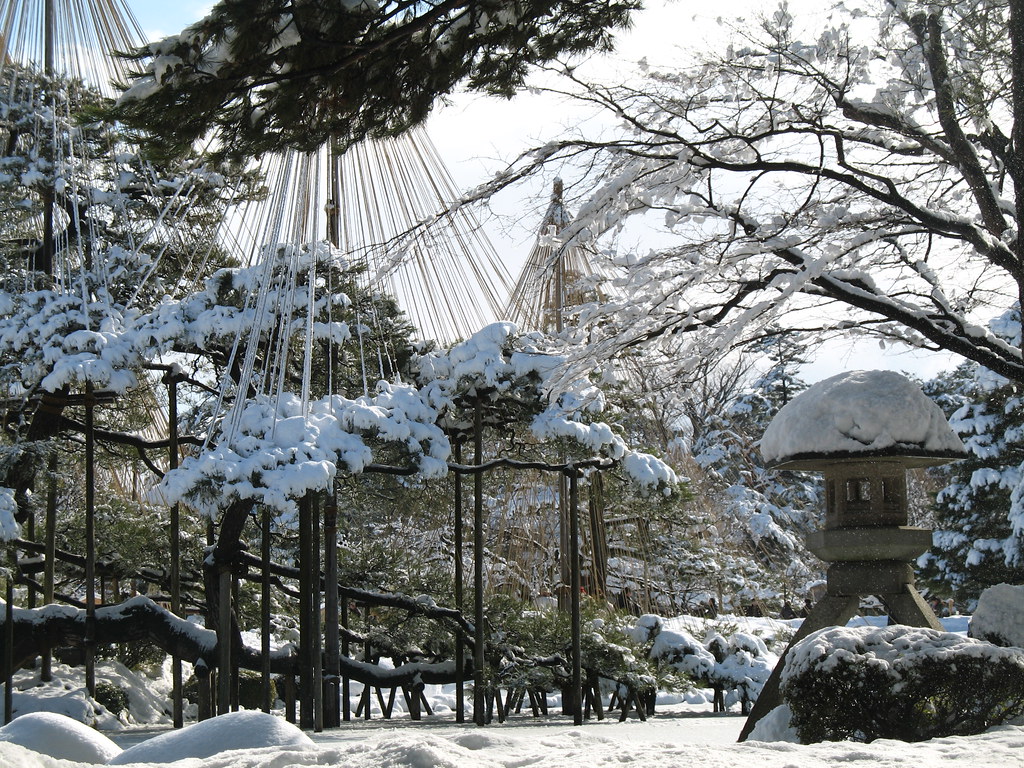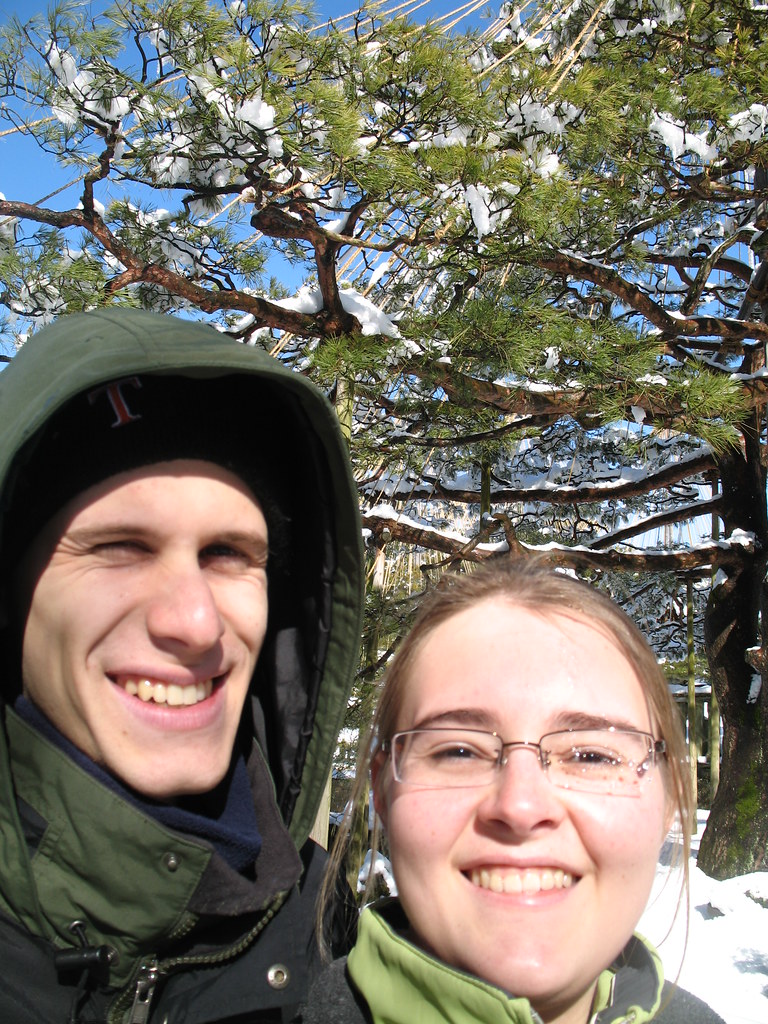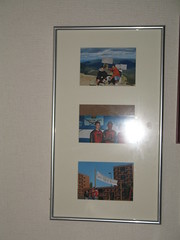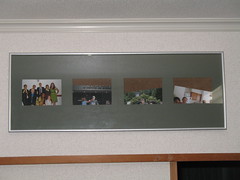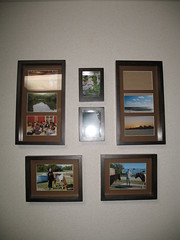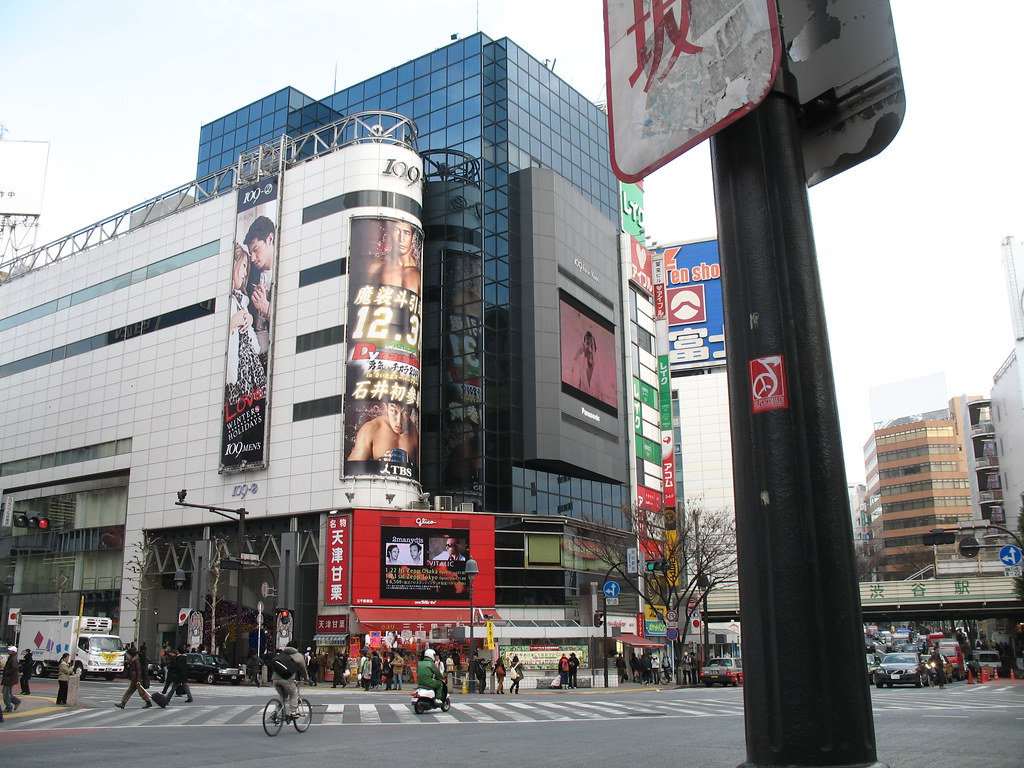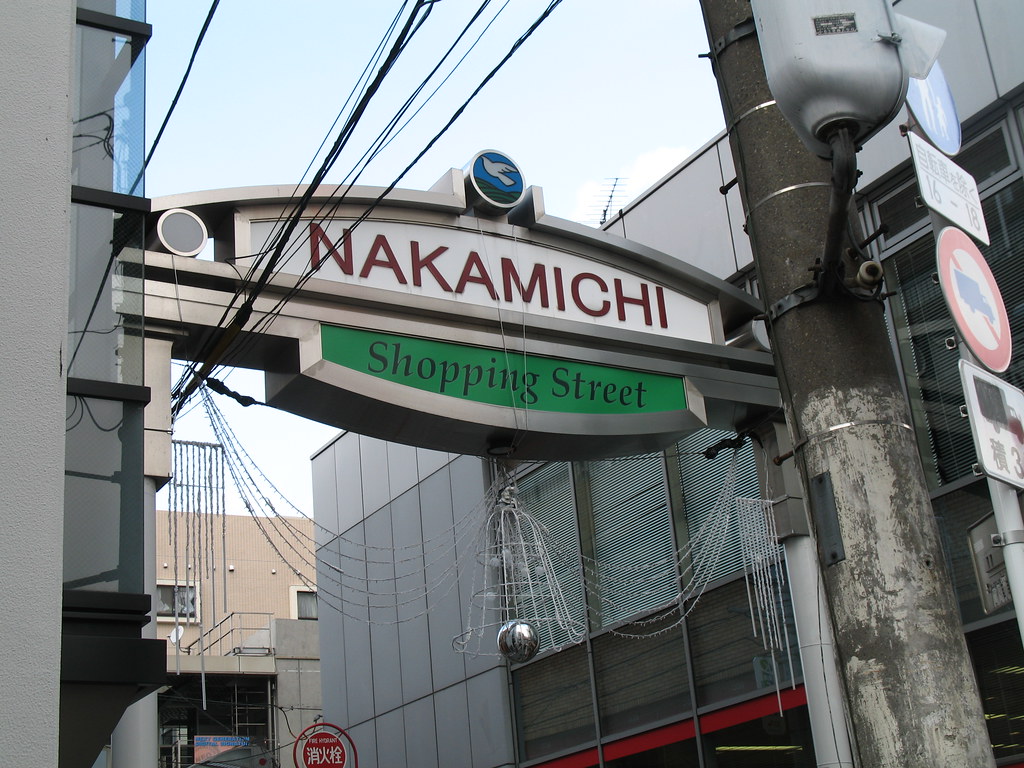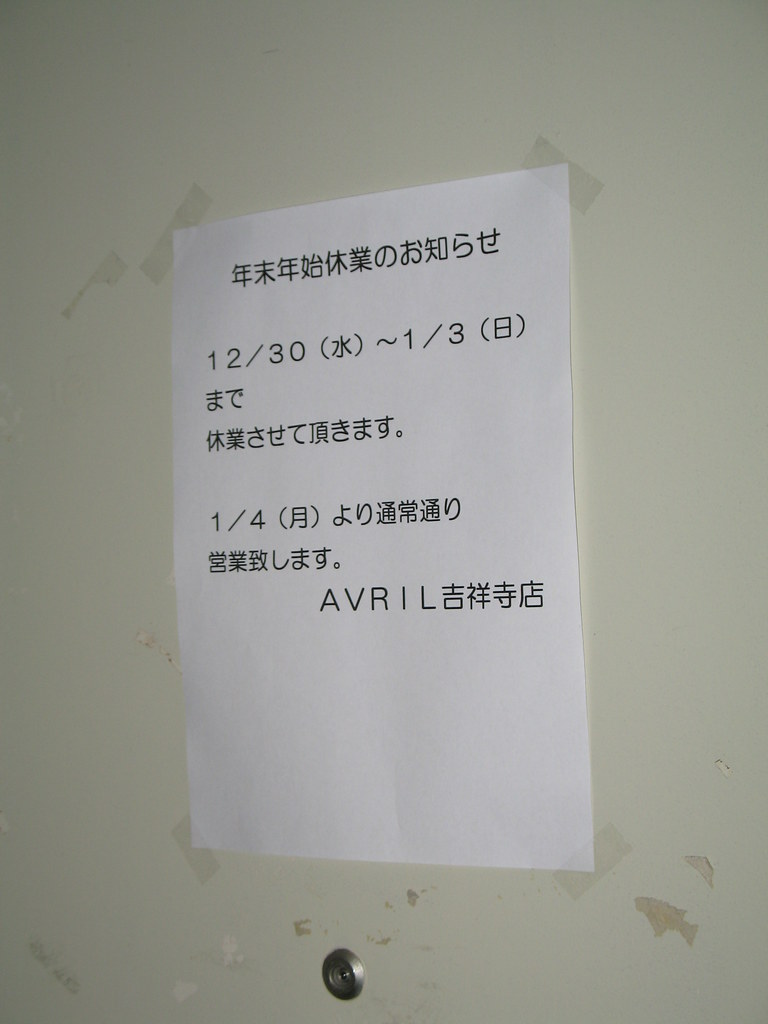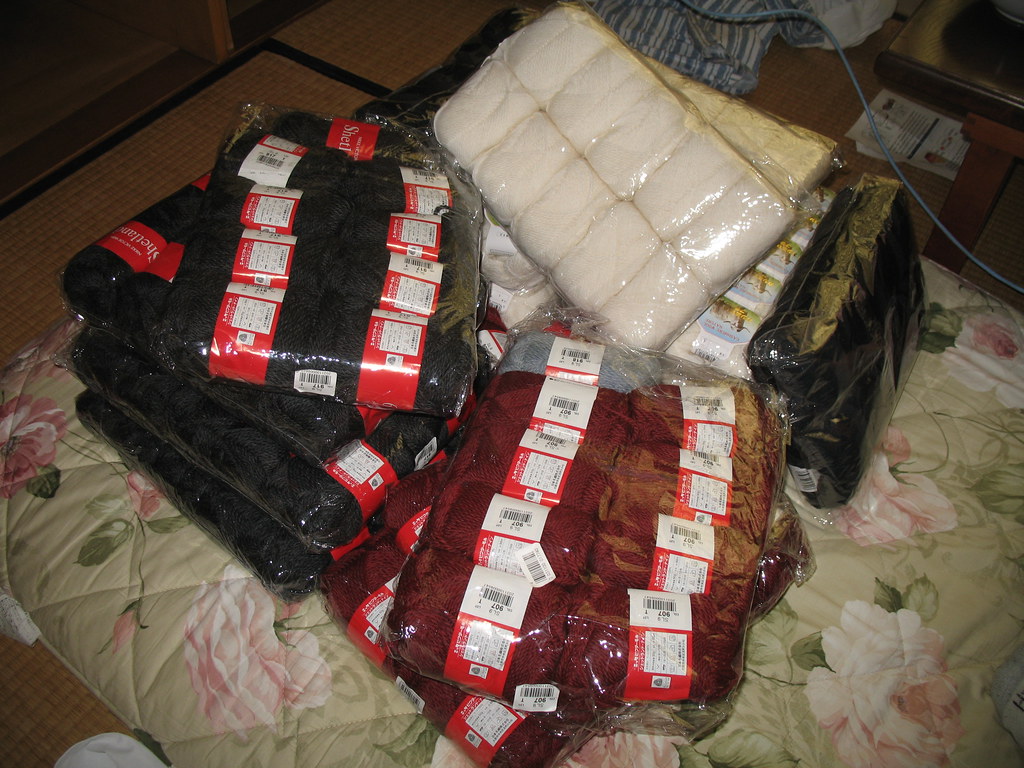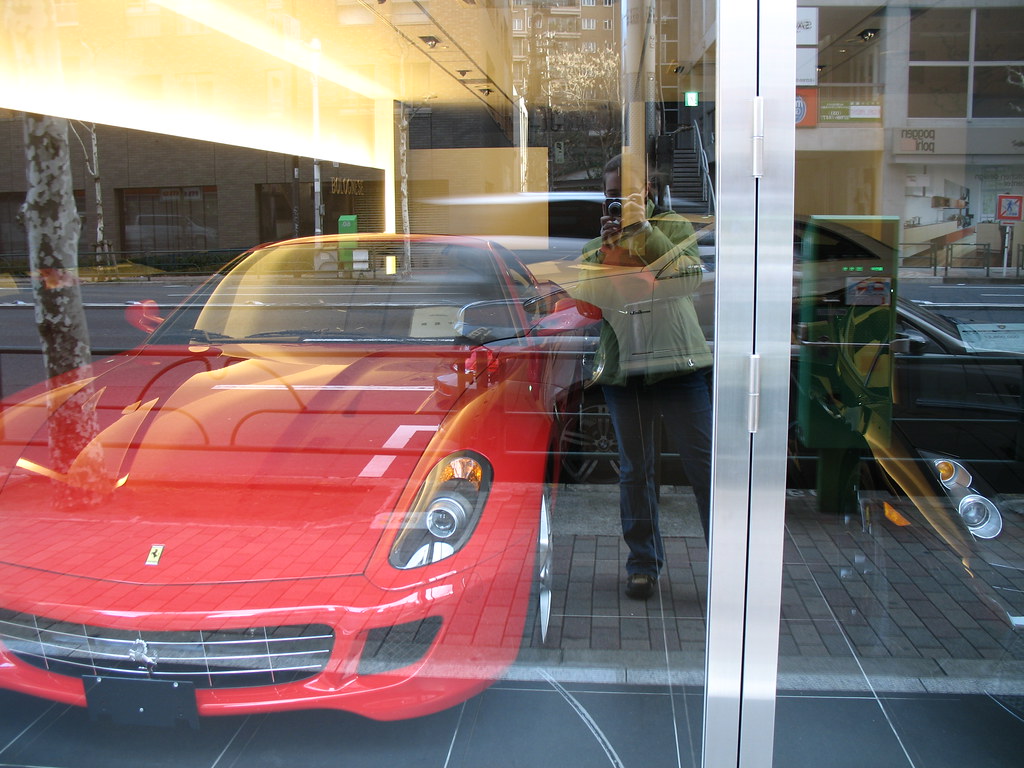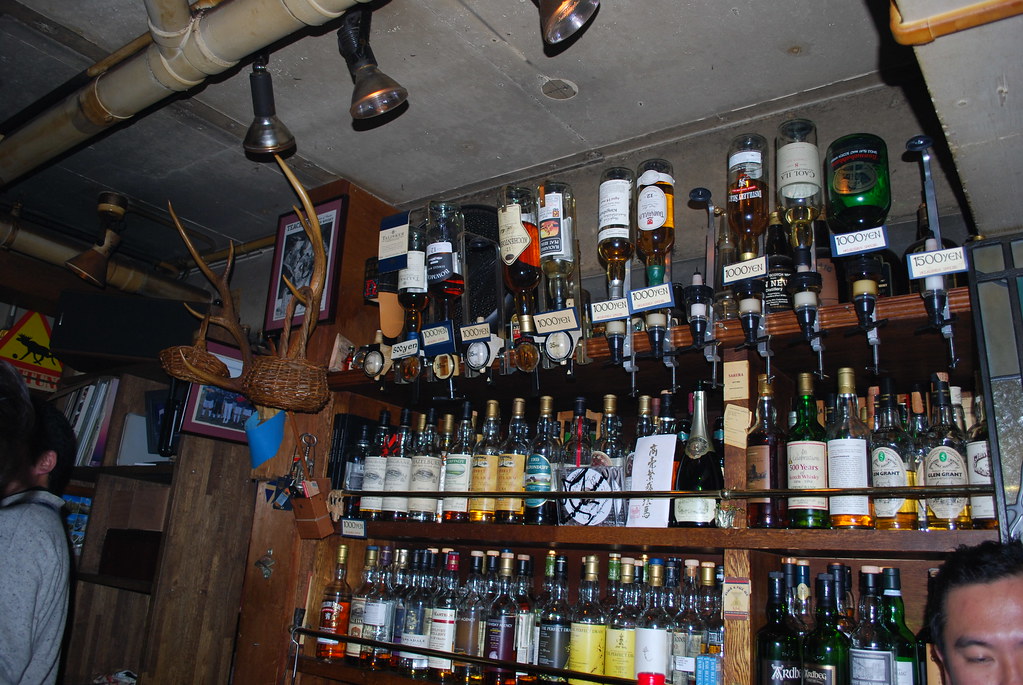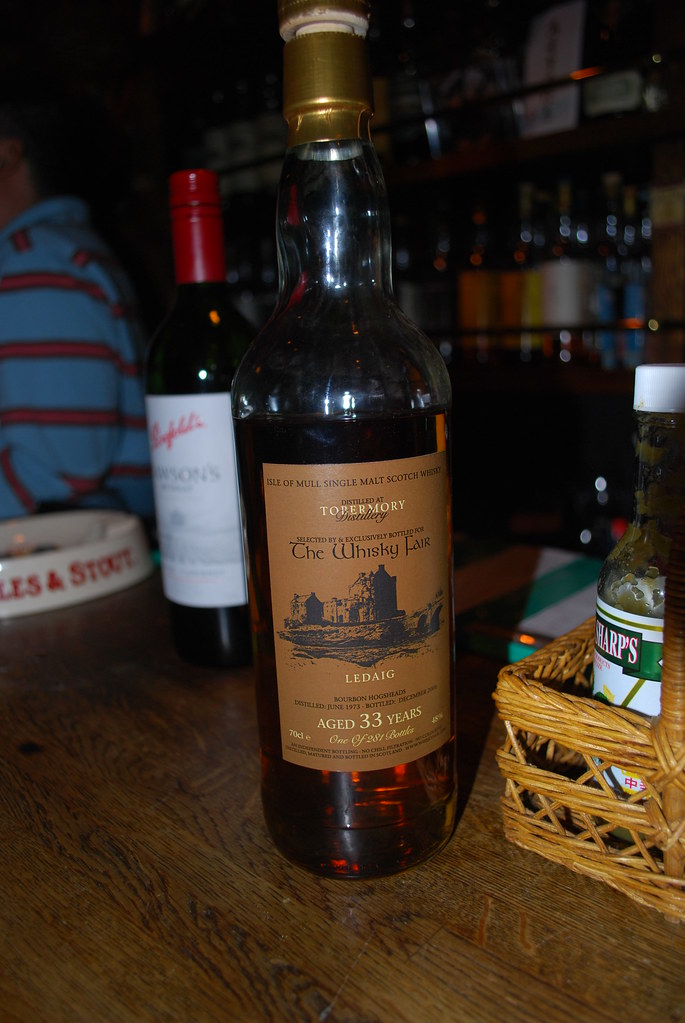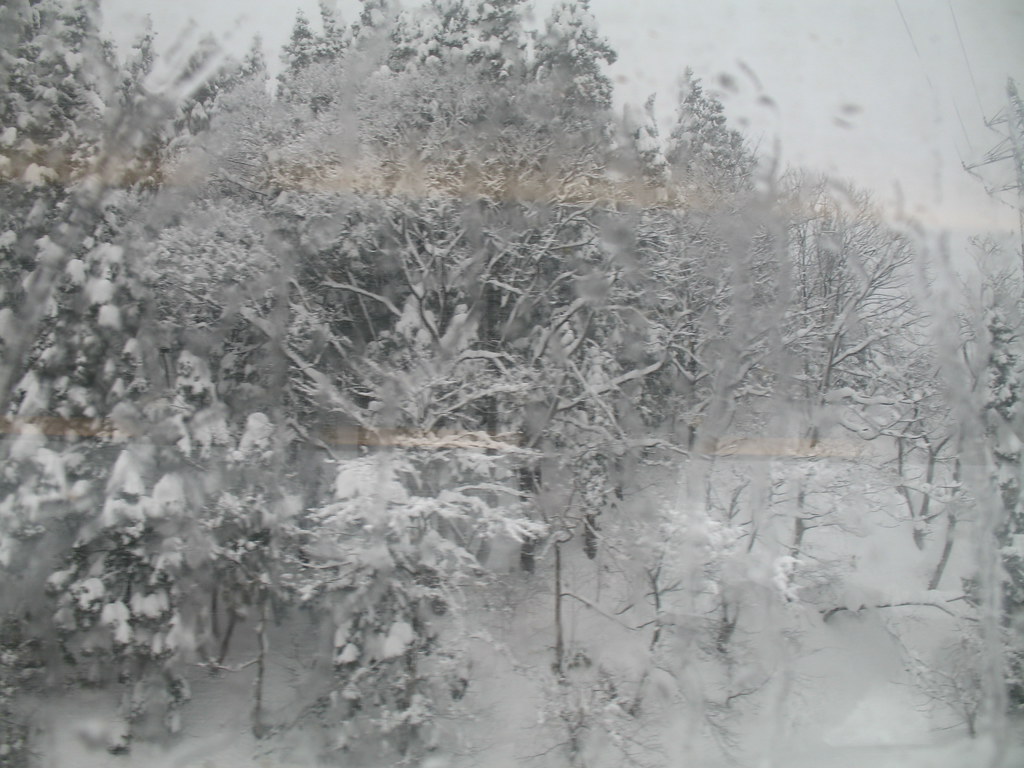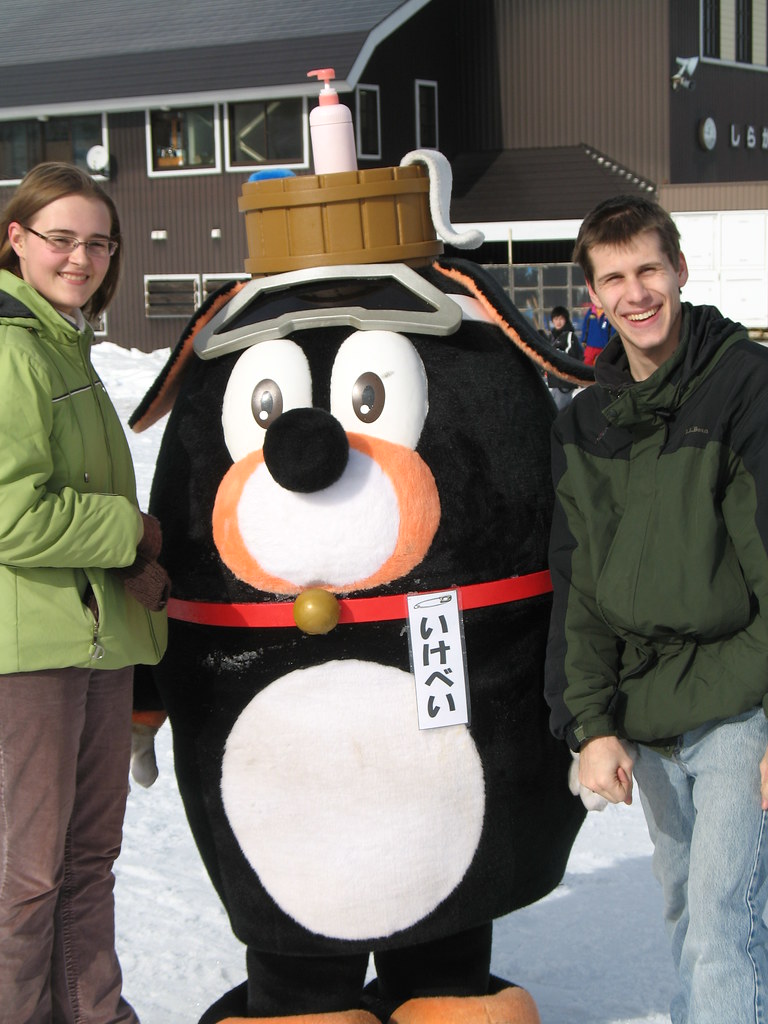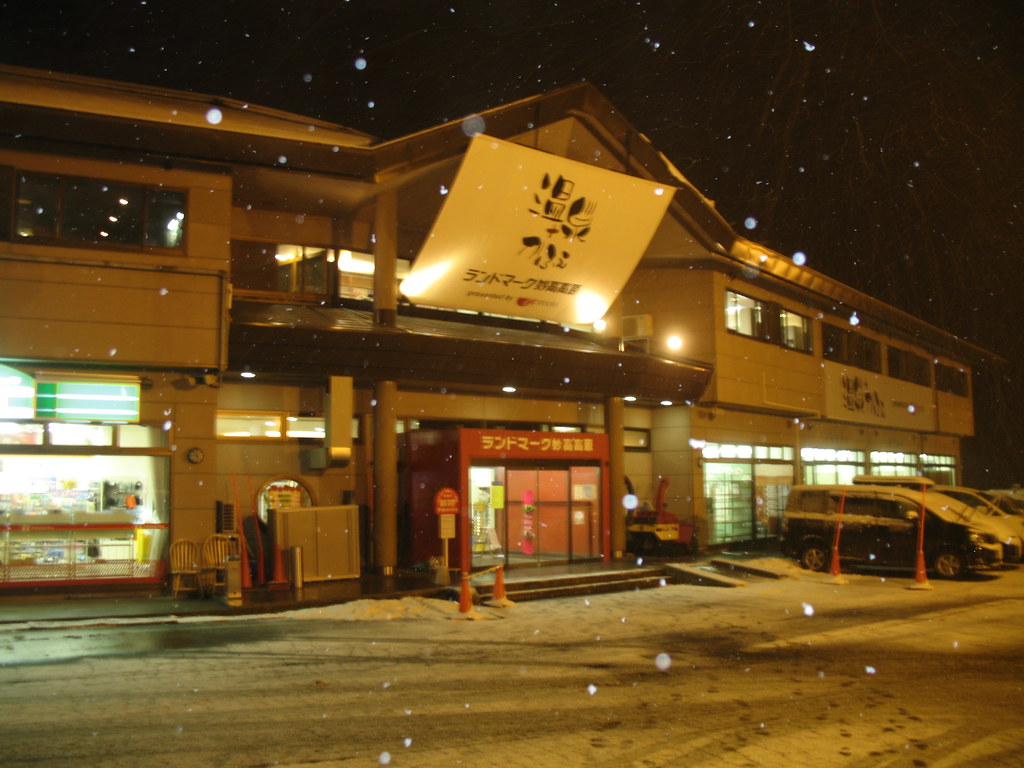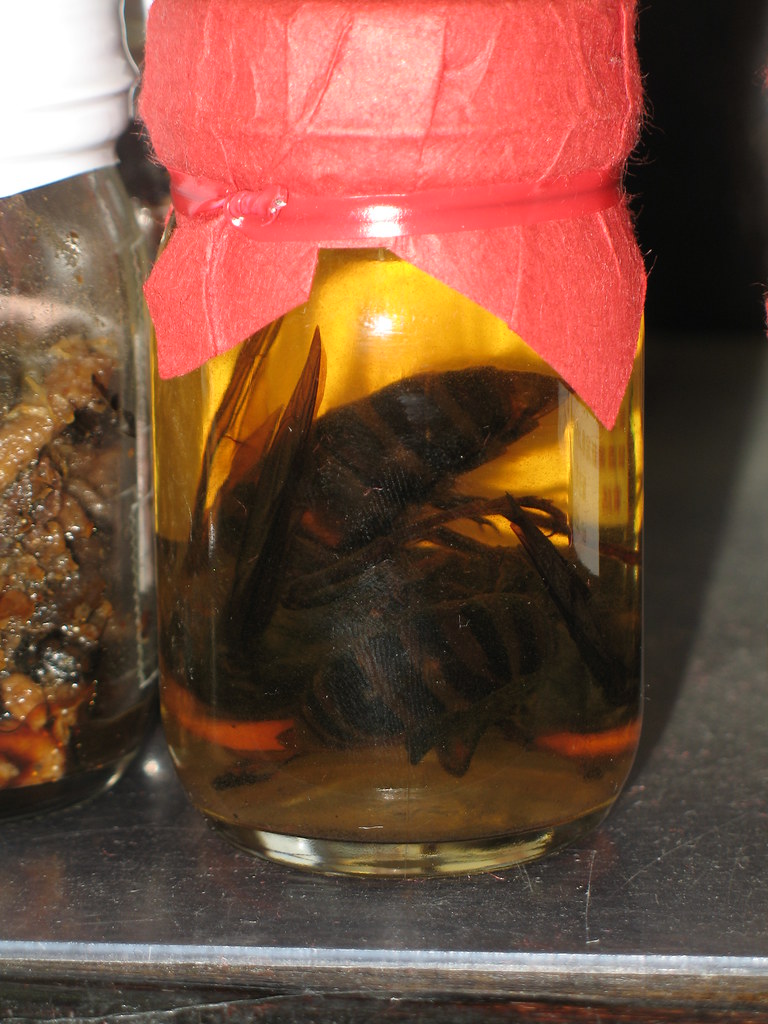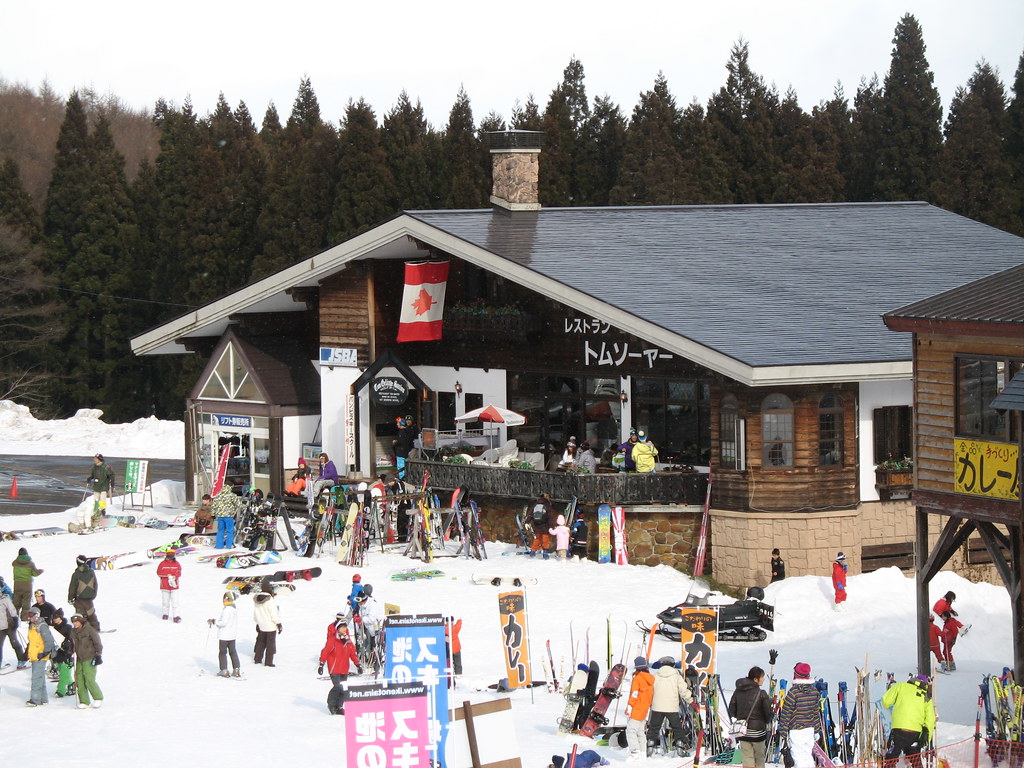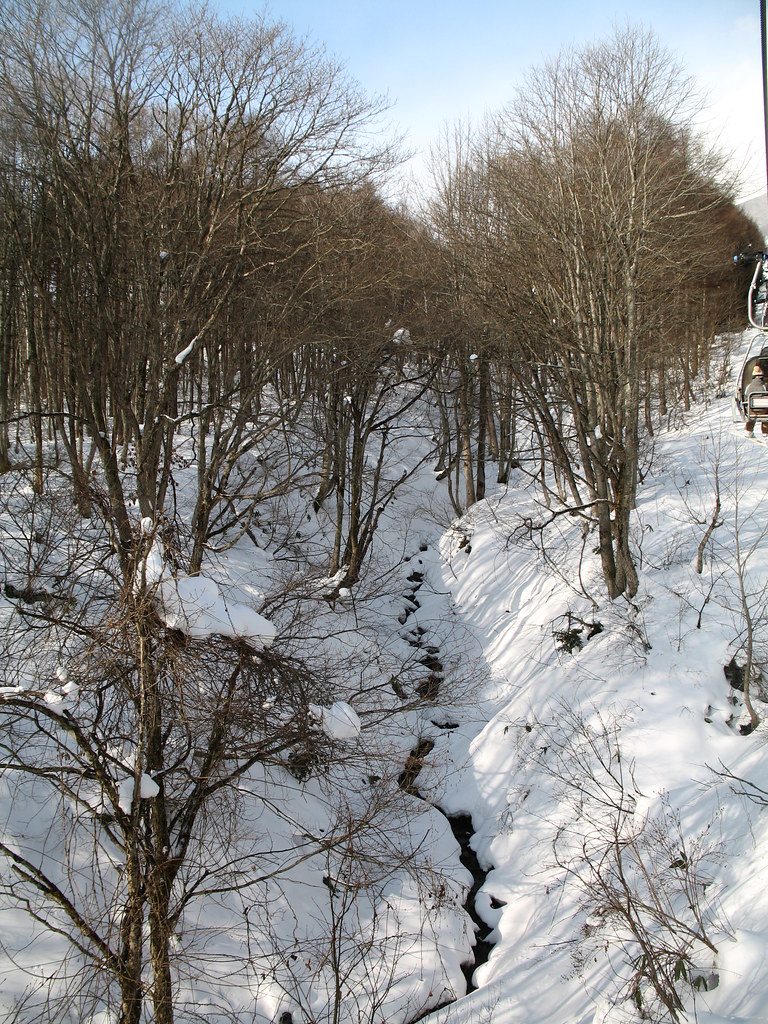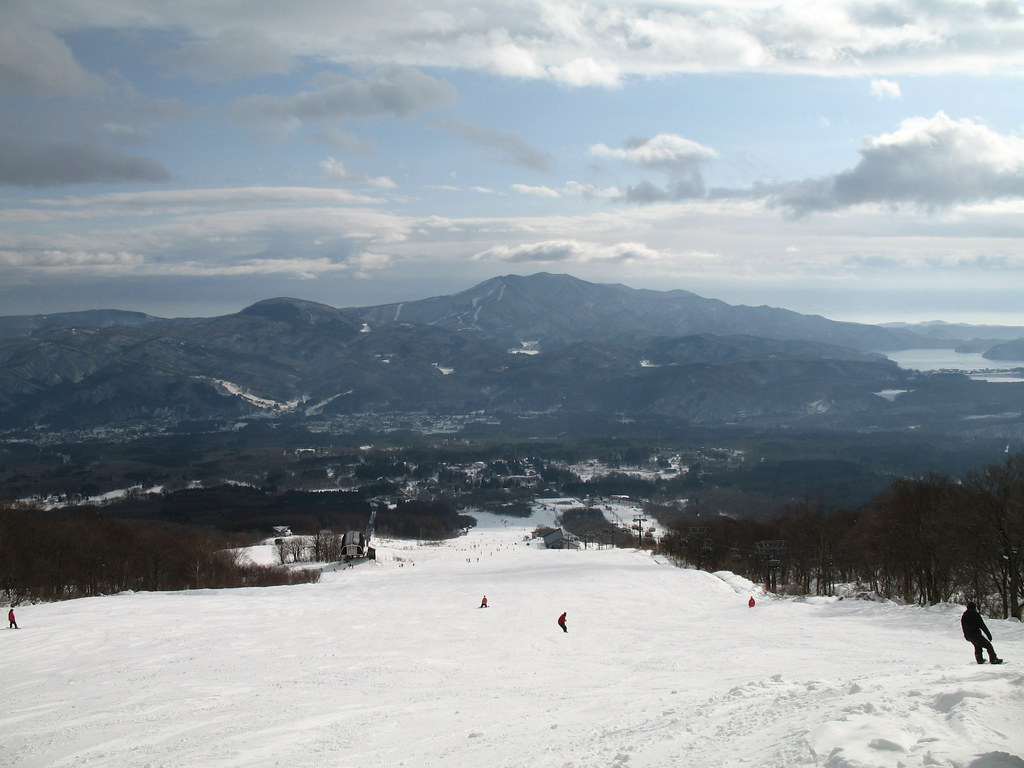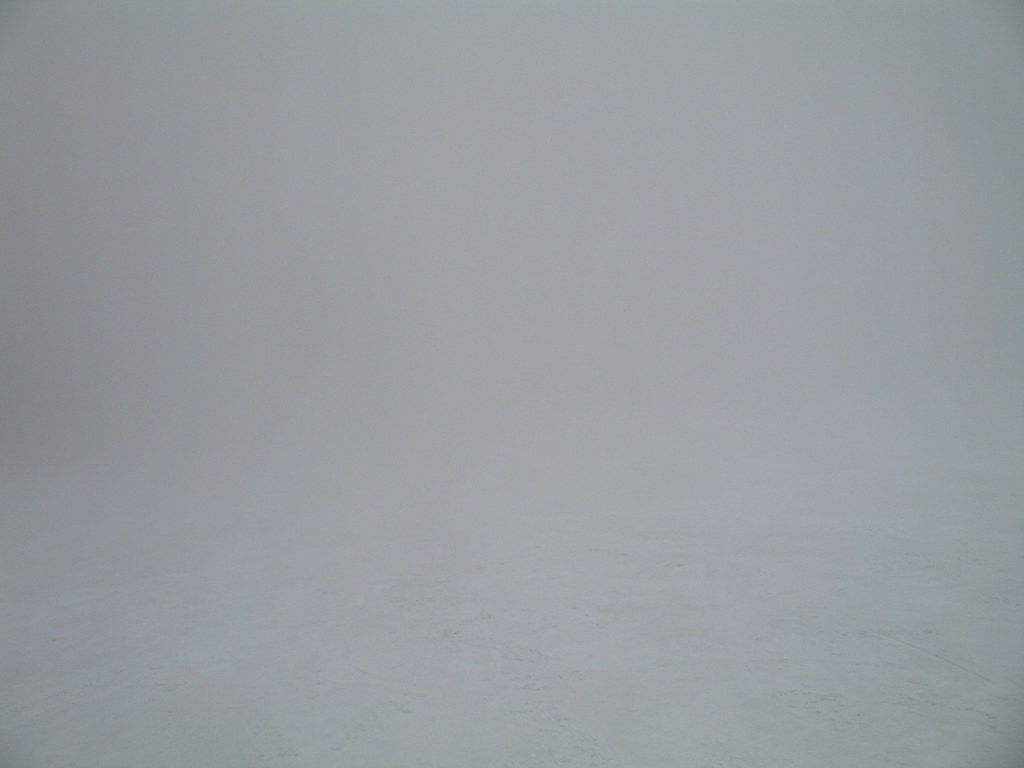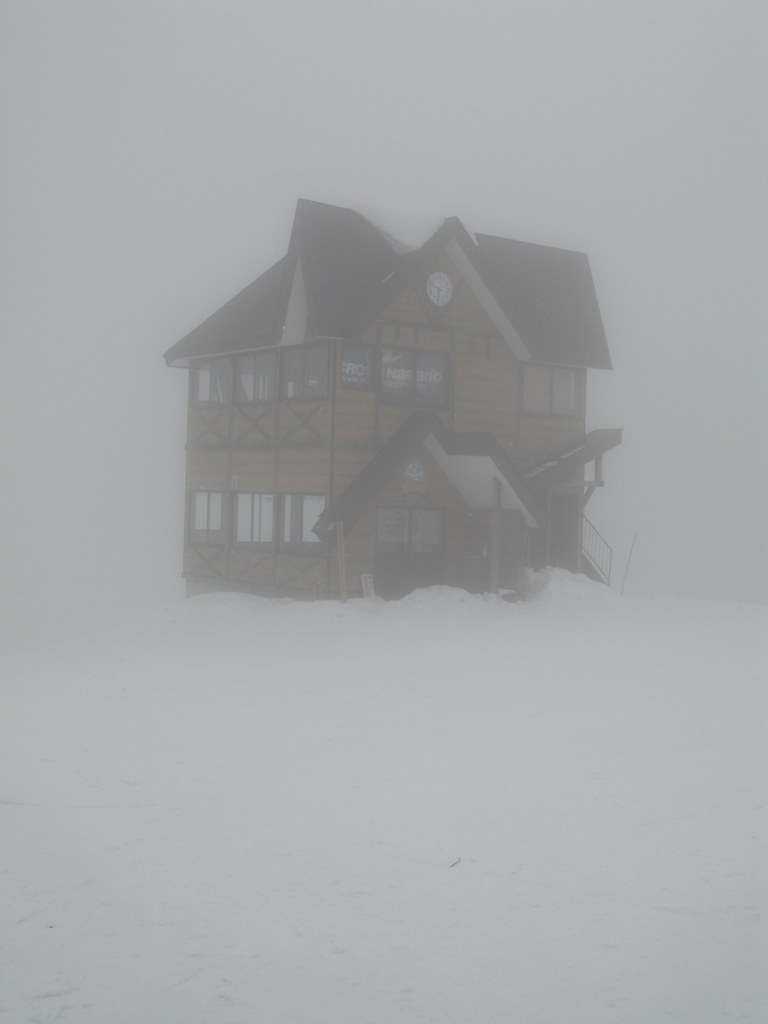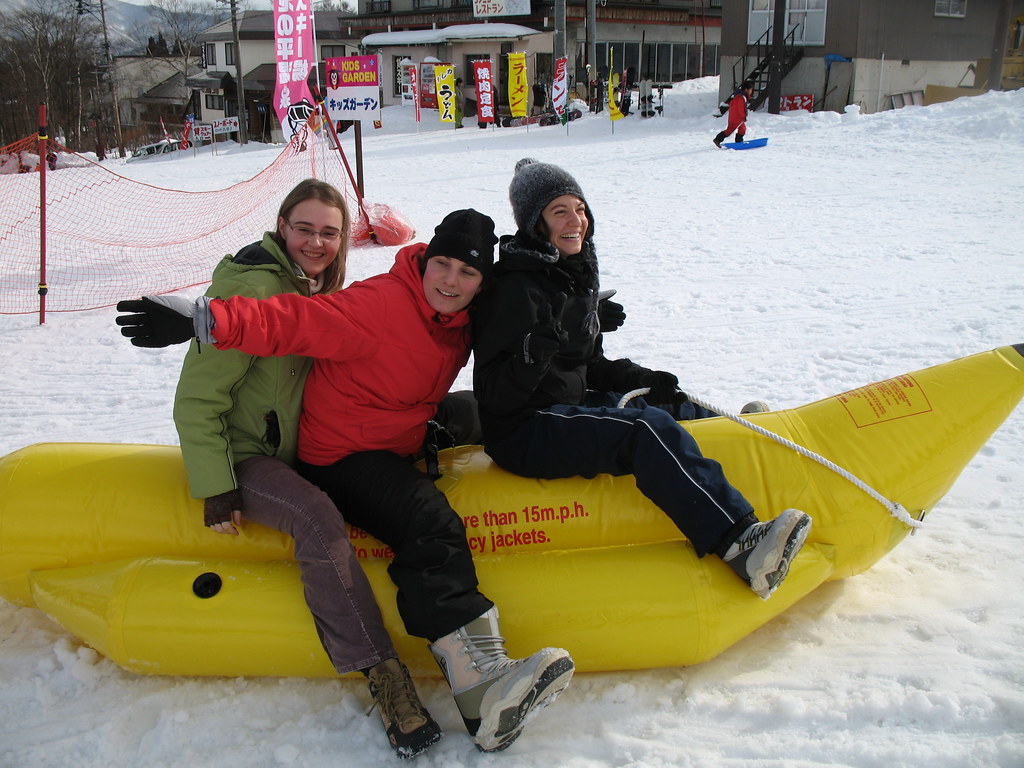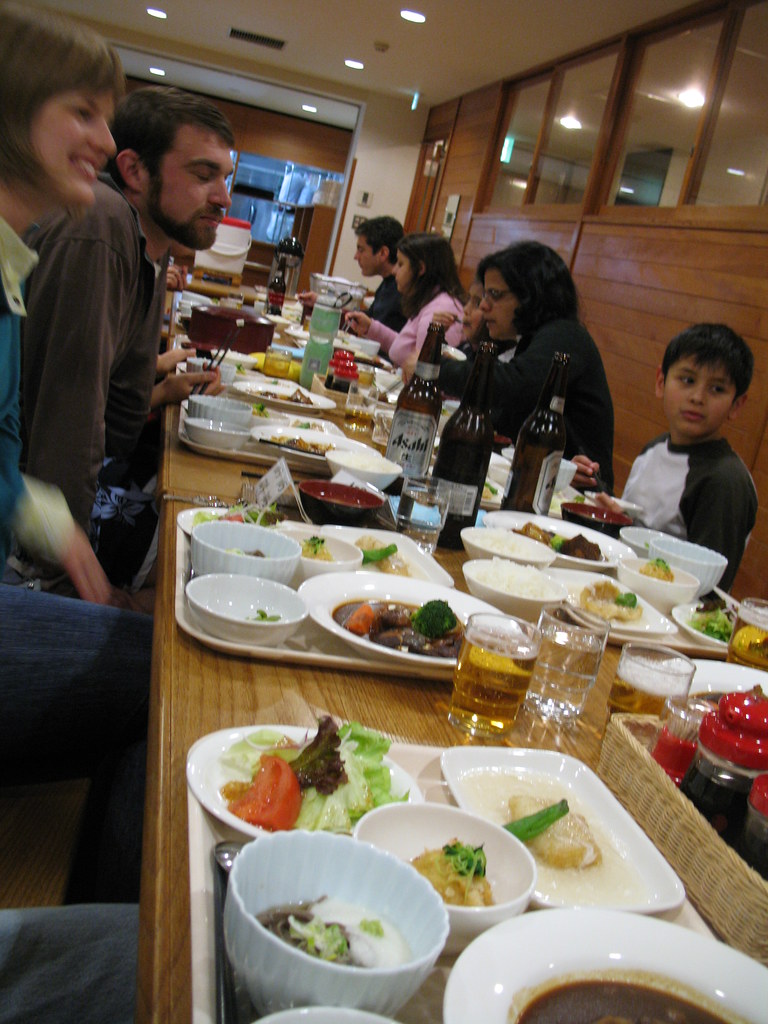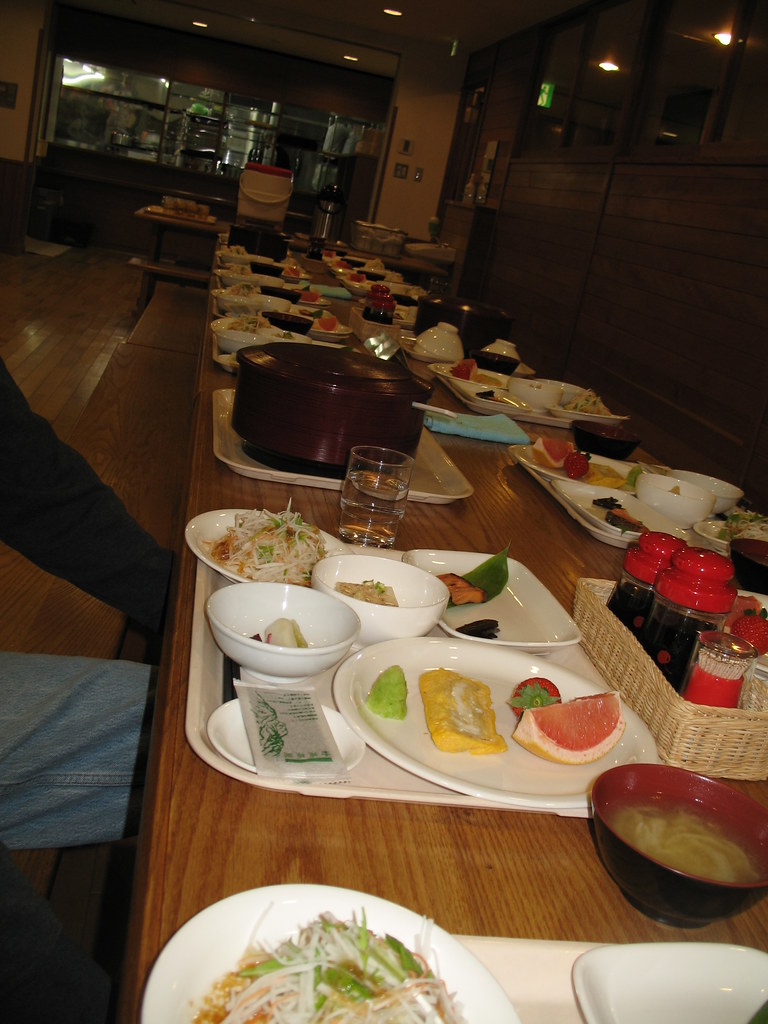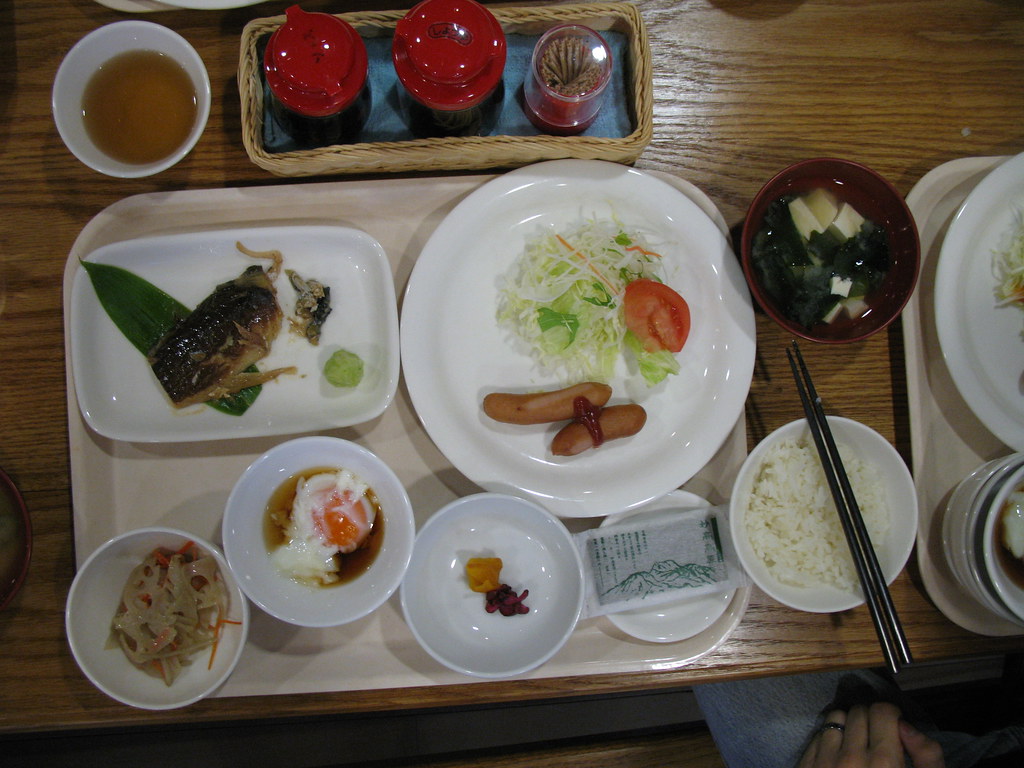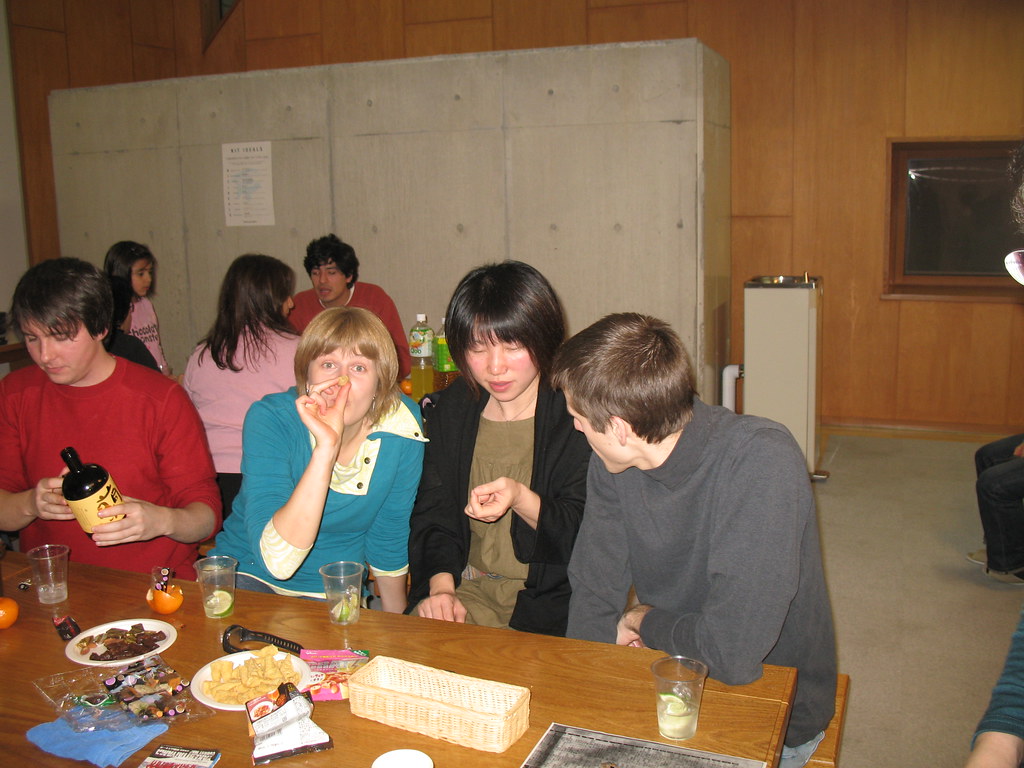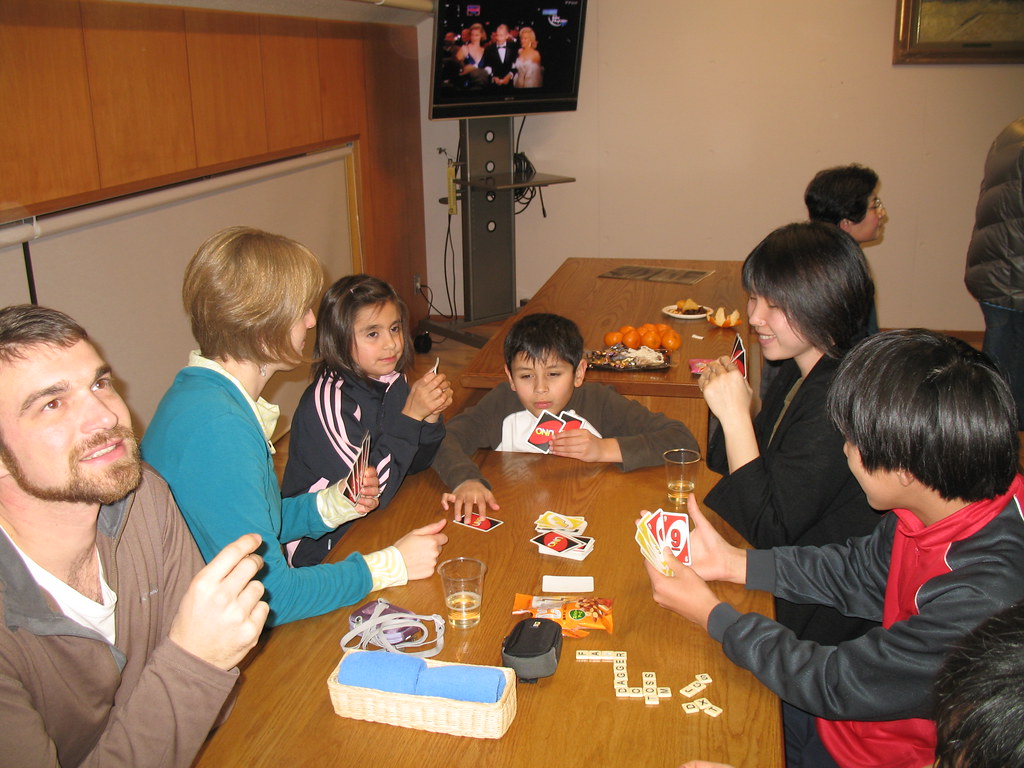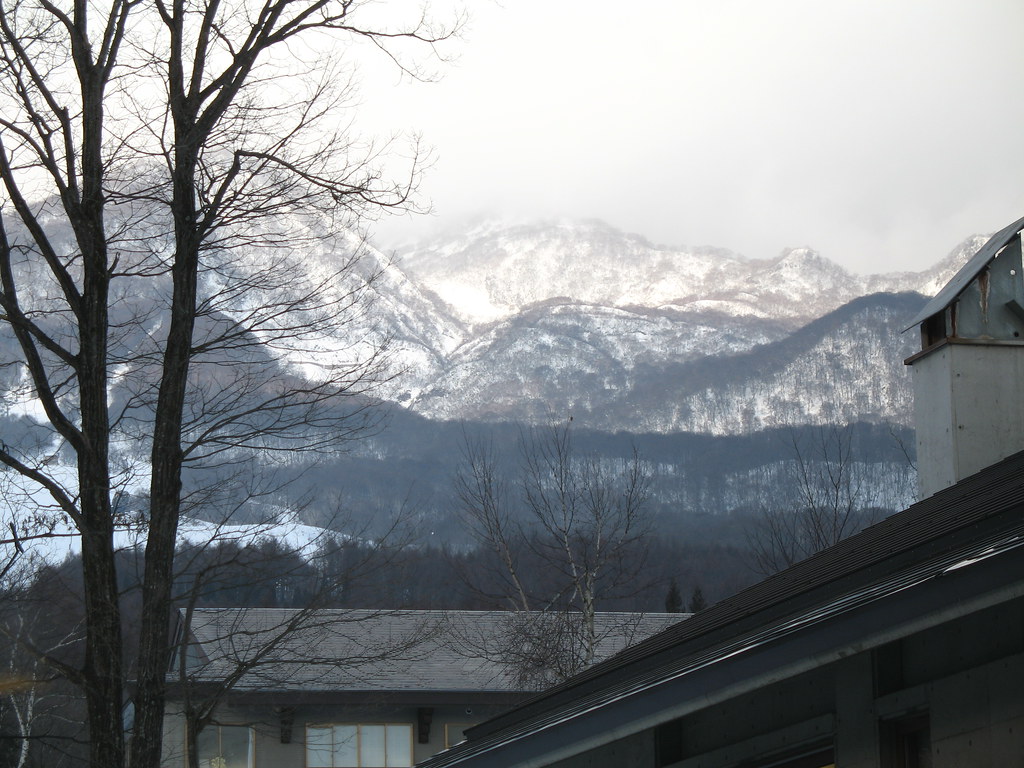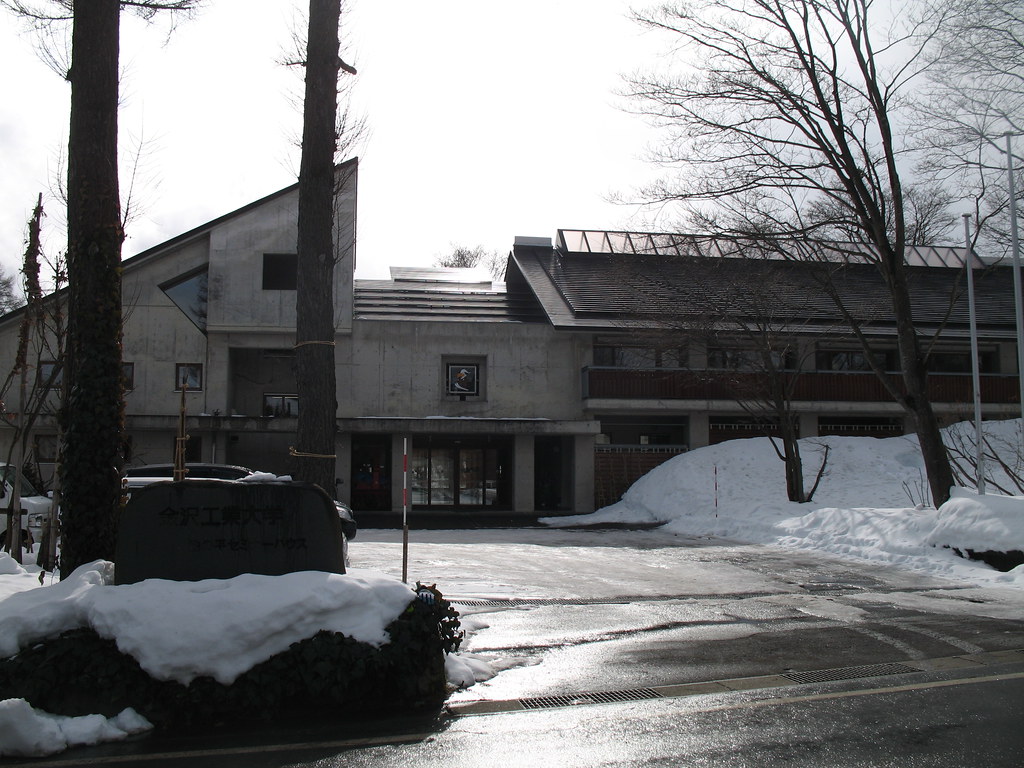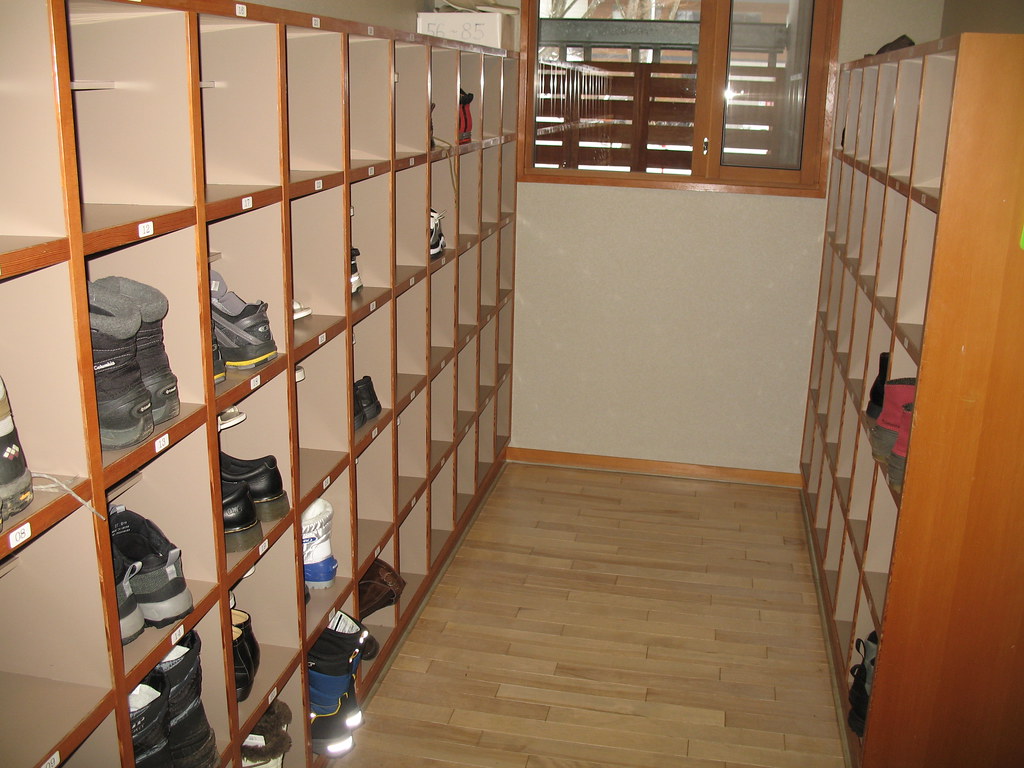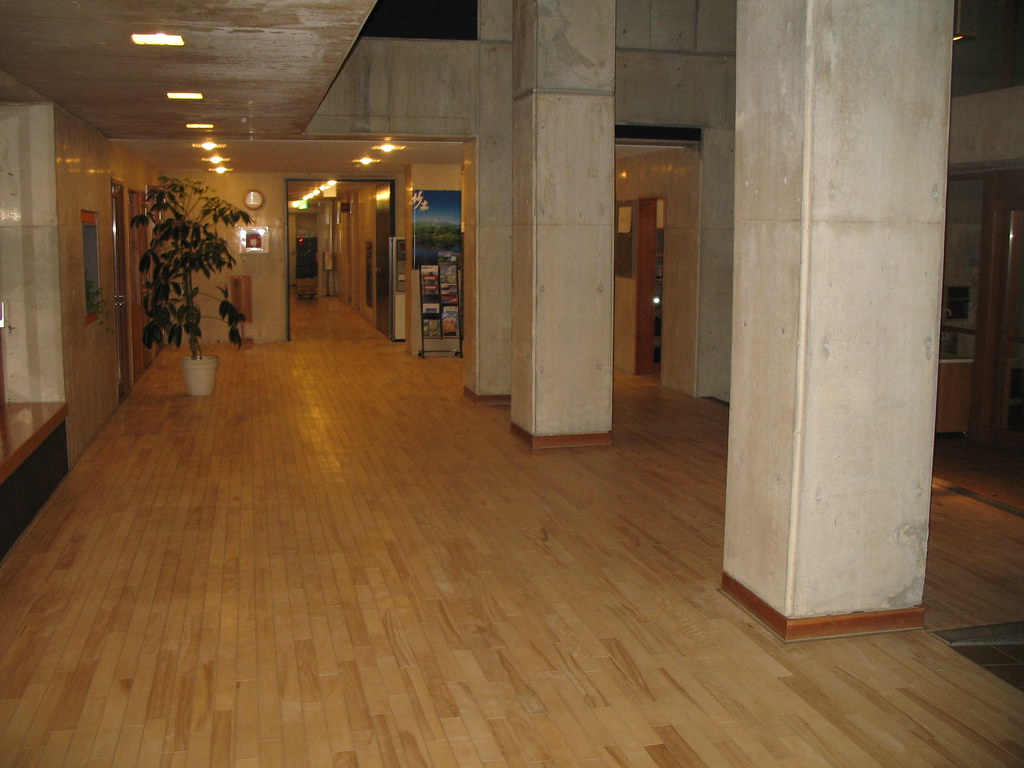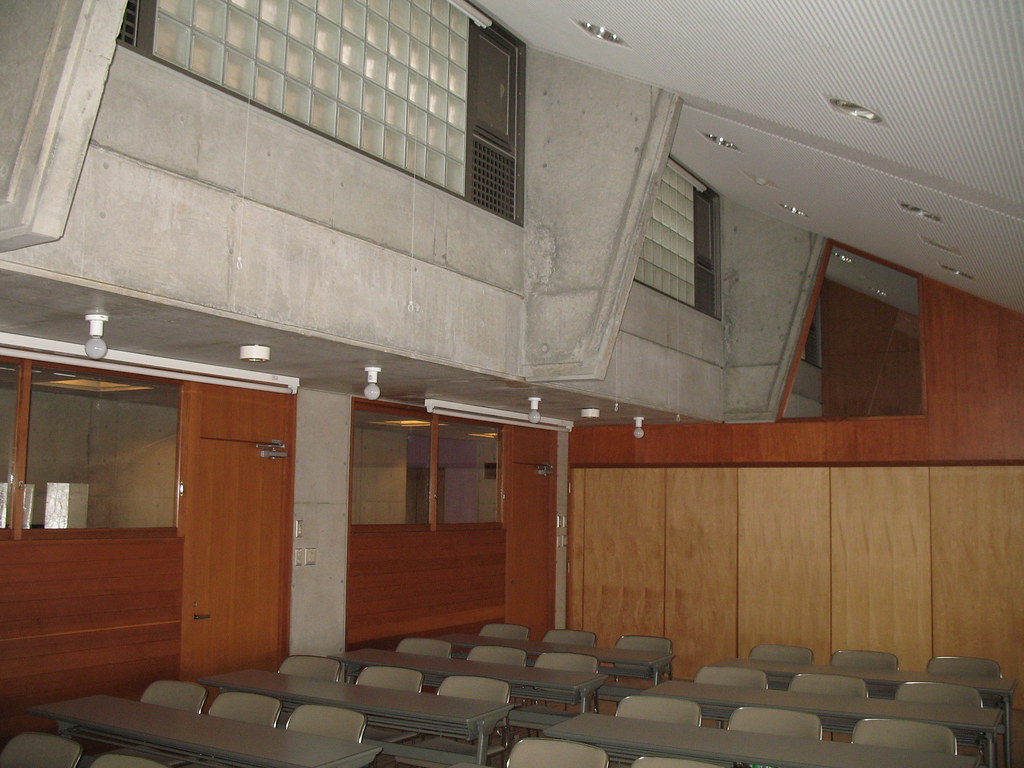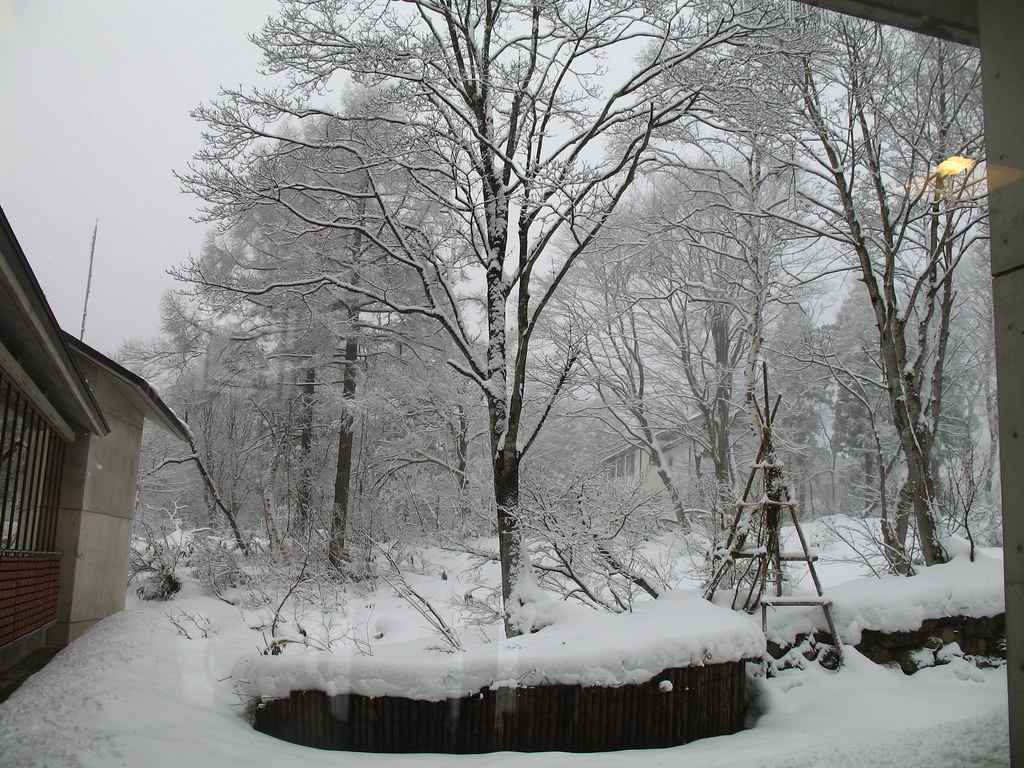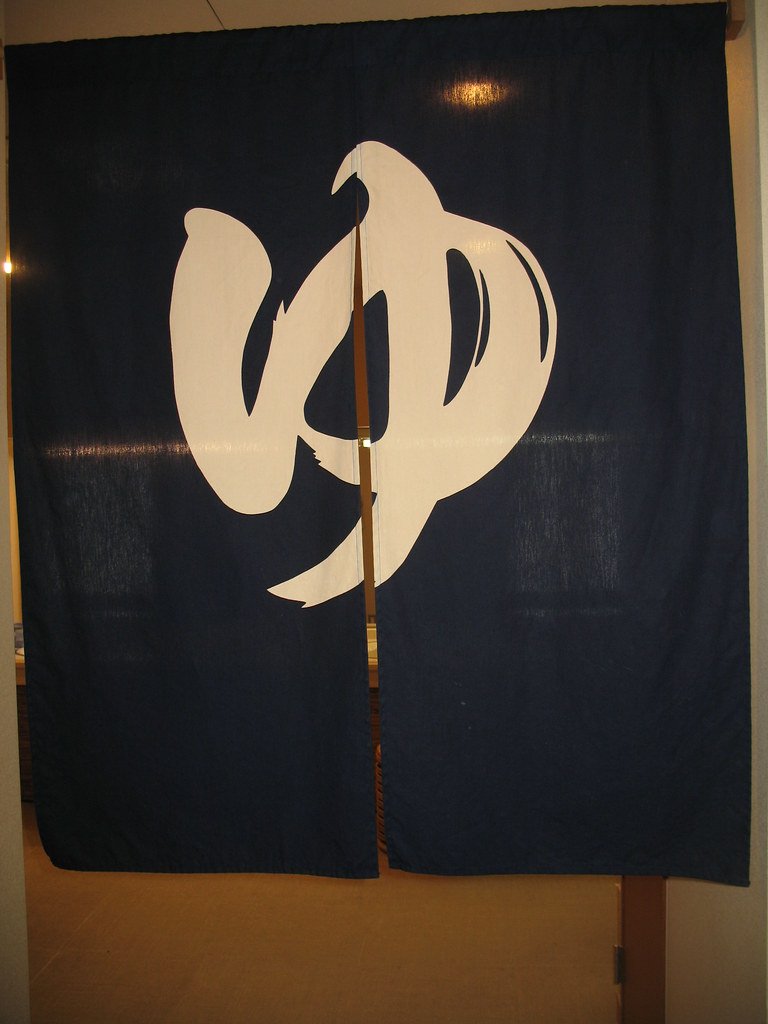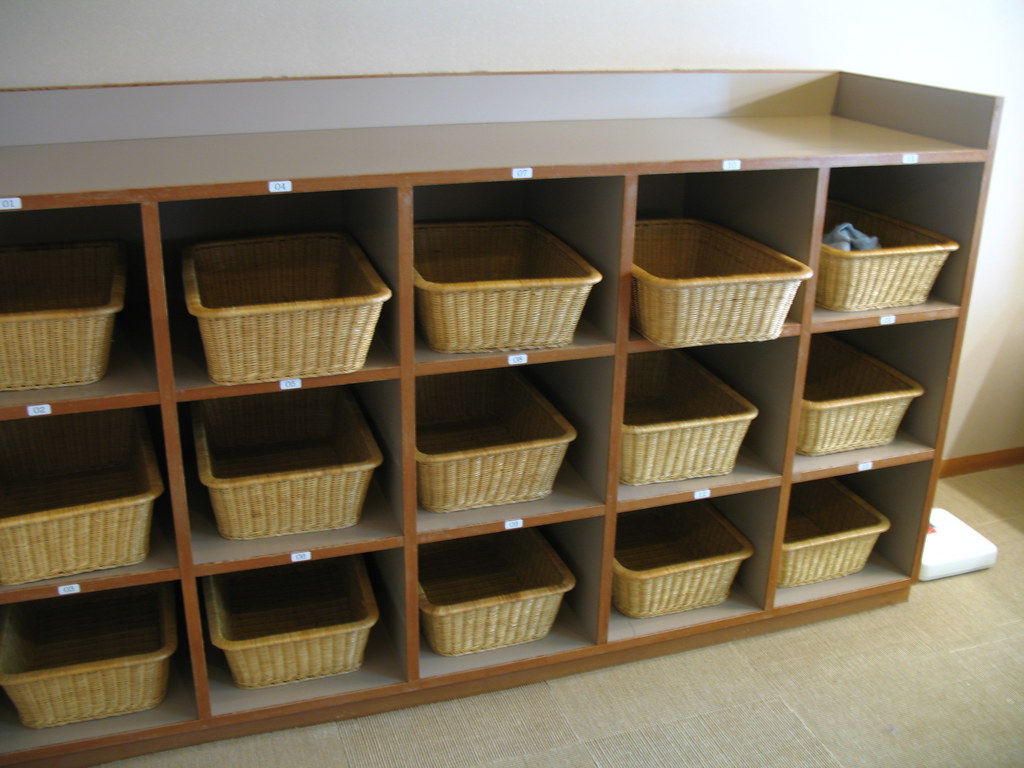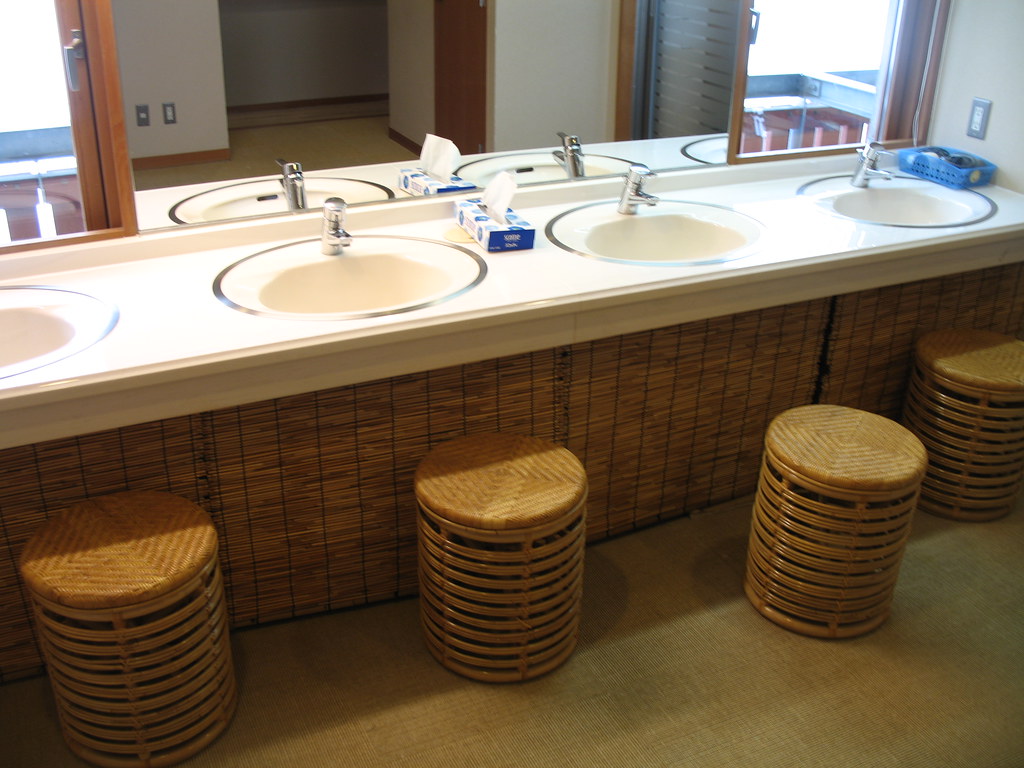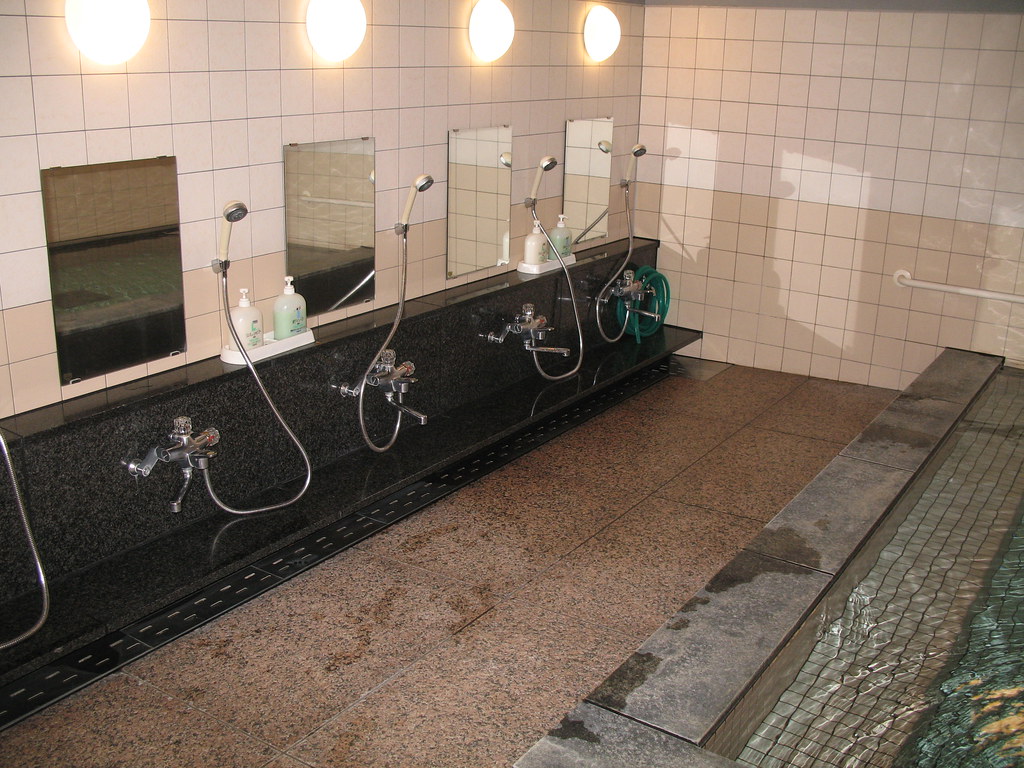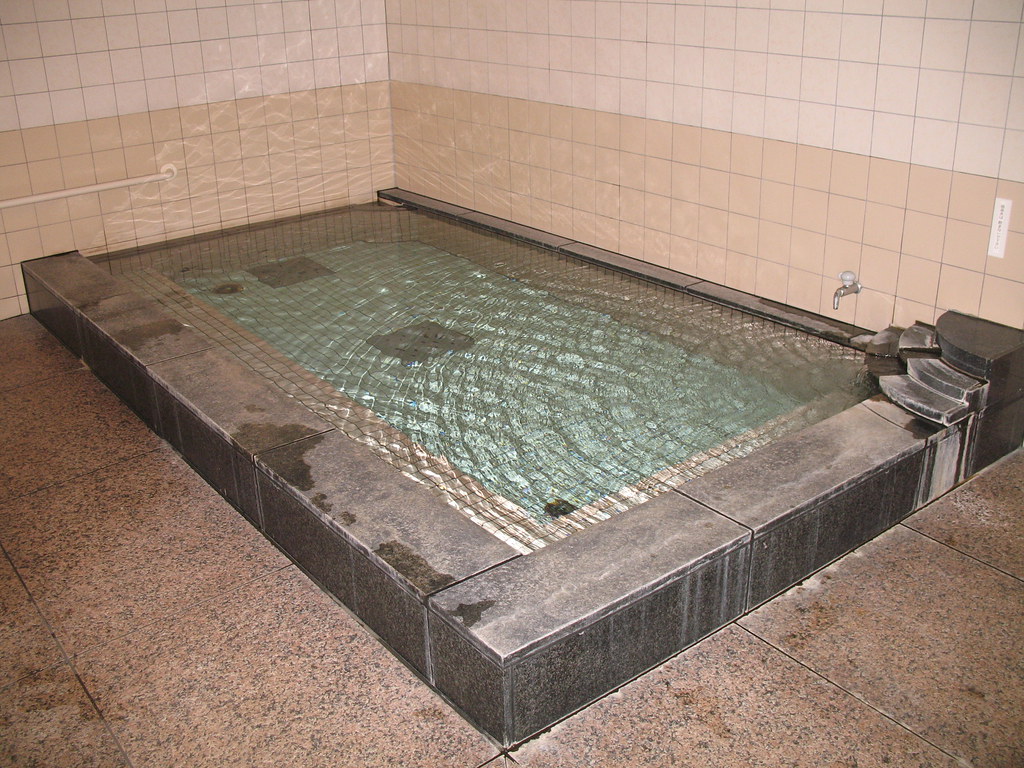The resort area around the base of the Ikenodaira ski area is pretty small - the KIT facility is actually one of the biggest and most heavily frequented lodging houses operating there, so there aren't many restaurants around. Given that the KIT Seminar House also regularly brings in a few dozen students at a time, it needs to have the capacity to feed them while they're there. It therefore has a commercial-grade kitchen, a full-time kitchen staff, and a large dining hall, where we ate breakfast and dinner each day we were there are part of the deal. Only Japanese cuisine was available, so we had rather a lot of it, some of which was new to us. Also, they served set meals only, no choices or substitutions possible. Full pictures and analysis follow.
The gaijin got the big table all to themselves.
Our first meal there was this dinner. The salad in the bottom left is conventional, fish on the top left was a white fish with a sticky sauce that didn't taste like much, fried thing in the middle is a potato-based croquette (in broth, because they tend to put delicious crispy fried things in broth to make them soggy and sad) which was pretty good. The soba noodle soup had a curious texture and stickiness to it - Scott said it reminded him of the effects of arrowroot power. I believe the white in it was ground taro (a sticky tuber) so it was probably that causing the viscosity of the soup. The bottom right is salty pickled vegetables - an extremely common item I can eat without complain but also without much enjoyment. The top right is the entree, (tiny) braised beef bit (singular and small) and some veggies. Wasn't bad but the sauce had a bitterness or maybe an aftertaste - something about it seemed a little off. You can see a miso-cabbage soup on the top off the edge of the tray, unremarkable. I cleared my plates and had some white rice to boot, but Ana had problems because most of these dishes were served cold, which is a huge turn-off for her. That included the beef, so I helped by eating most of her leftovers. All the dinners included beer (Asahi Super Dry, pretty much the only beer ever served in Japan) and tea, but for water you had to go to the sink to get some.
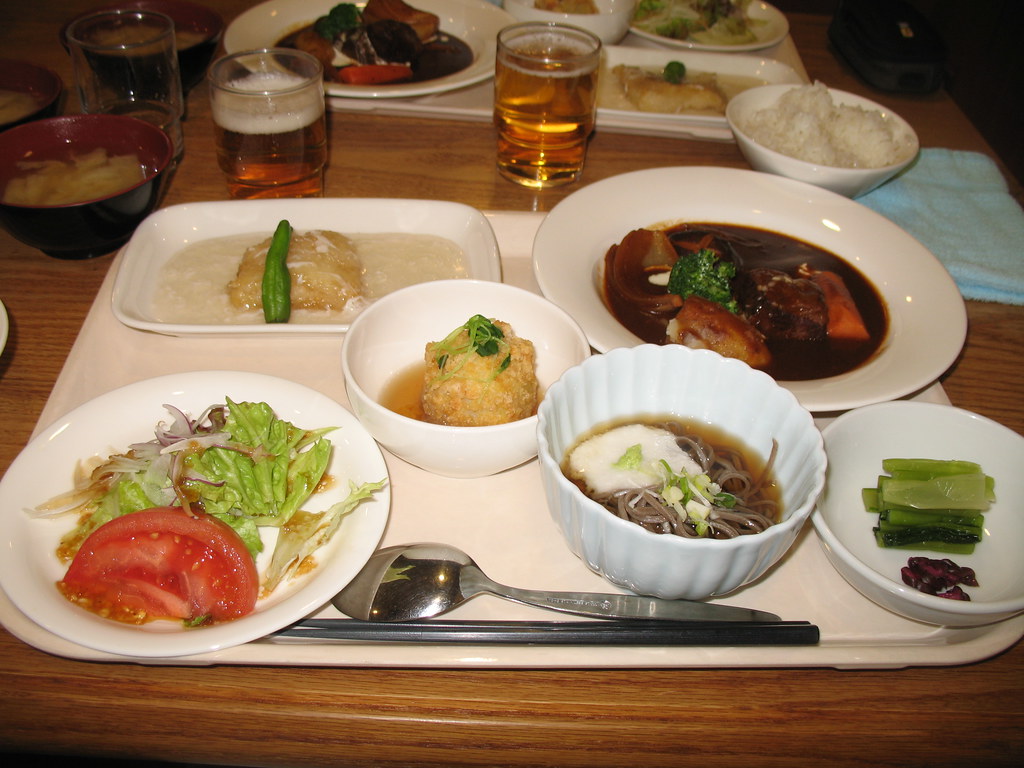
First Dinner
The next morning brought us the first of several of the most-Japanese breakfasts we've ever eaten / half-eaten / looked at. At first we thought maybe everybody else knew something we didn't....
...because this is how many people came to breakfast on time. The large red container is white rice - there was one full container that size for each group of four people present for both breakfast and dinner.
But shortly thereafter everybody filed in. It should be noted that the first day they gathered all of us around and very calmly and firmly told us that dinner was at six and breakfast was at eight and we should be there ten minutes early each time. I think they may have confused us with their usual audience of students. Seriously, guys? You're telling faculty to show up ten minutes early, or else? I don't understand. Also, they announced meals over the intercom quite loudly (it would definitely wake anyone trying to sleep several times over) so it isn't like anyone who isn't there doesn't know about it. Moving back to the food...
First Breakfast
The first breakfast was hit or miss for me, but aside from the strawberry a near total miss for Ana. The bottom left is a salad of (I think) radishes, with a Japanese style salty/tart/sweet dressing. I rather enjoyed it. Clearly in the top left is a sliver of cold roast salmon, which was exactly as you would expect. In the middle is tofu with sesame dressing, which both of us passed on. Nothing against tofu but I don't need to see it at breakfast. Bottom right has more of the same pickled vegetables and some seaweed wrappers. I'm not sure what the wrappers were supposed to wrap, so I didn't eat them. On the top right, there is radish puree, omelet, a strawberry and some grapefruit. The fruits were fine but they put sugar in the eggs and that didn't work for me at all.
Second Dinner
The second dinner definitely hit a high point for me. The kimchee in the bottom left was tasty, the two small bowls of salty pickles were adequate, the stewed daikon in broth in the top left was also adequate, I skipped the fishcake in broth in the small white bowl (not a fan of compressed fish products), but the salad on the top right was fantastic. It had raw tako (octopus) and raw scallops in a tart, citrus-y dressing reminiscent of ceviche. The scallops may have been the best I've ever had. No grit, firm, subtly sweet, not covered up by the dressing - phenomenal. They weren't cooked in citrus either - totally 100% raw. After I ate mine I started helping less adventurous people deal with their overpopulation of scallops. Sadly, I had more takers than I could handle. Some people do not know what they're missing. There was another miso soup, this time I think with the crouton-like bready things that one often finds in miso soup here, not sure what they are or what they're called. And, of course, white rice.

Juan (son of a visiting RIT professor) gave me his scallops. Maybe all that Asahi clouded his judgement. (Kidding! Please don't hurt me.)
The second breakfast was pretty much a travesty. Witness the horror and sadness below. Cocktail wieners, cold, with ketchup, next to an undressed cabbage salad - this format of salad is common, but for breakfast? A raw egg, in sauce, intended to be eaten over rice. Pickles, the usual. Cold lotus root salad in the bottom left corner, which was acceptable for me but of course Ana wouldn't go near it because it was cold. The top left is cold roast mackerel,or something similar, in any case a heavier, oily fish. More inexplicable seaweed wrappers, tofu miso soup, and white rice. I ate the fish, daikon salad, pickles, and rice. I think Ana might only have eaten rice.
Second Breakfast...of HORROR
Fortunately, the third dinner was much better, else Ana would have been wasting away. Nice salad on the bottom left, wonderfully fatty and greasy mushroom egg rolls with hot mustard on the top left (need a break from all this healthy food), two dishes of pickles, one dish of tofu in broth (skipped), and the entree, which was the best part - salmon roasted in tin foil with a sweet white miso sauce with potatoes and vegetables. A darn good hot, filling, winter meal.
Third Dinner
The third breakfast was in line with what we'd come to expect, though it was better than the previous day's. Three pickled dishes, cold roast salmon, and the salad and eggs were the on the same plate. They didn't sugar the eggs this time, and the tomatoes were good so at least I got something to eat.
Third Breakfast
It should be noted that after dinner the first two nights, there were get-togethers in the lounge upstairs. The manager supplied beverages and snacks, games came from somewhere, and it was a fairly personable time. Since so many gaijin were around, it was a festival of full-speed English language with some Spanish and French mixed in between the most broadly multi-lingual. The free sparkling wines and shochu (hard alcohol from rice) didn't hurt either. One Japanese professor was meticulously crafting gin-and-tonics for the crowd, with far more dedication and focus than his extremely inexpensive gin merited, but the effort and the final results were appreciated.
I'm talking to our travel agent (Really!) while Sarah looks to be throwing snack food at Ana. Scott is more concerned with pouring shochu.
Uno and Scrabble were in evidence but mostly we talked.
So, our stay at Ikenodaira Seminar House did contribute to our knowledge of Japanese cuisine, in ways good and bad. But for the price and convenience, it couldn't be argued with, and it was so nice to be able to speak English at full speed for a couple of days. I'm glad we went. The next post will be about the skiing and activities there, and have lots of pretty pictures of the area.
